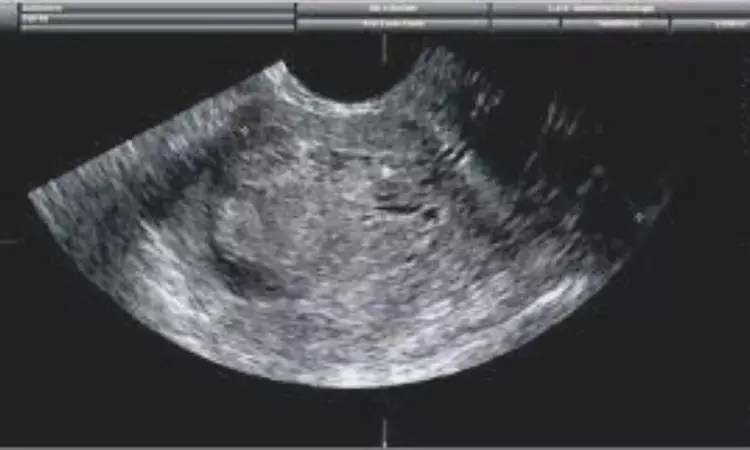- Home
- Medical news & Guidelines
- Anesthesiology
- Cardiology and CTVS
- Critical Care
- Dentistry
- Dermatology
- Diabetes and Endocrinology
- ENT
- Gastroenterology
- Medicine
- Nephrology
- Neurology
- Obstretics-Gynaecology
- Oncology
- Ophthalmology
- Orthopaedics
- Pediatrics-Neonatology
- Psychiatry
- Pulmonology
- Radiology
- Surgery
- Urology
- Laboratory Medicine
- Diet
- Nursing
- Paramedical
- Physiotherapy
- Health news
- Fact Check
- Bone Health Fact Check
- Brain Health Fact Check
- Cancer Related Fact Check
- Child Care Fact Check
- Dental and oral health fact check
- Diabetes and metabolic health fact check
- Diet and Nutrition Fact Check
- Eye and ENT Care Fact Check
- Fitness fact check
- Gut health fact check
- Heart health fact check
- Kidney health fact check
- Medical education fact check
- Men's health fact check
- Respiratory fact check
- Skin and hair care fact check
- Vaccine and Immunization fact check
- Women's health fact check
- AYUSH
- State News
- Andaman and Nicobar Islands
- Andhra Pradesh
- Arunachal Pradesh
- Assam
- Bihar
- Chandigarh
- Chattisgarh
- Dadra and Nagar Haveli
- Daman and Diu
- Delhi
- Goa
- Gujarat
- Haryana
- Himachal Pradesh
- Jammu & Kashmir
- Jharkhand
- Karnataka
- Kerala
- Ladakh
- Lakshadweep
- Madhya Pradesh
- Maharashtra
- Manipur
- Meghalaya
- Mizoram
- Nagaland
- Odisha
- Puducherry
- Punjab
- Rajasthan
- Sikkim
- Tamil Nadu
- Telangana
- Tripura
- Uttar Pradesh
- Uttrakhand
- West Bengal
- Medical Education
- Industry
New cervicovaginal epigenetic test enables rapid noninvasive screening for endometrial Cancer: Study

Spain: Women experiencing signs of endometrial cancer can now be assessed with a noninvasive, credible test, which can help with early detection and lessen the need for in-person consultations, states a recent study published in the Journal of Clinical Oncology.
Over the past ten years, the incidence of endometrial cancer (EC) has increased. The primary symptom is abnormal bleeding, which is any postmenopausal, intermenstrual, or prolonged heavy menstrual bleeding. The stage at diagnosis substantially influences EC patient survival. Diagnoses that are made later have a worse chance of survival and demand more intensive care. Transvaginal ultrasonography (TVUS) is currently the first step in the diagnosis of suspected EC, which is then followed by hysteroscopy and endometrial biopsy. Improvements in patient care and a shorter time to diagnosis could result from a quick triage method that could rule out malignancies without the requirement for an initial specialist referral.
To achieve this objective, the researchers intended to create and validate a quick, non-invasive, and accurate triage test for EC in order to lessen the need for invasive diagnostic procedures and increase patient survival.
In this study, they discussed the Women's cancer risk IDentification - quantitative polymerase chain reaction test for endometrial cancer (WID-qEC), a three-marker test that assesses DNA methylation in gene areas of GYPC and ZSCAN12. Using 726 cervical smear samples from women with and without EC, researchers developed the test to screen and prioritize women with suspected EC.
They validated the test in 562 cervicovaginal samples using three separate collection methods (cervical smear: n = 248; vaginal swab: n = 63; and self-collection: n = 251) and 4 distinct settings (case/control: n = 388; cohort of women presenting with postmenopausal bleeding: n = 63; a cohort of high-risk women with Lynch syndrome: n = 25; and a nested case/control setting from a screening cohort and samples taken up to 3 years before EC diagnosis: n = 86). Sensitivity, specificity, and estimated negative and positive predictive values (NPV/PPV) were used to assess test performance.
Key findings of the research:
- The test detected EC with sensitivities of 97.2%, 90.1%, and 100% respectively, in cervical, self-collected, and vaginal swab samples derived from symptomatic patients. The corresponding specificities were 75.8%, 86.7%, and 89.1%.
- 90.9% of EC cases were detected by the WID-qEC in samples taken up to a year before diagnosis.
- Performance on the test was comparable regardless of menopausal state, age, stage, grade, ethnicity, and histology.
"The WID-qEC may be a useful tool for managing women with atypical bleeding because it can be used in self-collected samples, especially where access to specialized care is limited. The best settings to use this test in for early detection and preventive screening will be determined by additional research", added the researchers.
The authors concluded that for screening and prioritizing women with symptoms suggestive of EC or those at risk of EC, the WID-qEC may be a user-friendly test.
Reference:
DOI: 10.1200/JCO.22.00266 Journal of Clinical Oncology
Dr Kamal Kant Kohli-MBBS, DTCD- a chest specialist with more than 30 years of practice and a flair for writing clinical articles, Dr Kamal Kant Kohli joined Medical Dialogues as a Chief Editor of Medical News. Besides writing articles, as an editor, he proofreads and verifies all the medical content published on Medical Dialogues including those coming from journals, studies,medical conferences,guidelines etc. Email: drkohli@medicaldialogues.in. Contact no. 011-43720751


